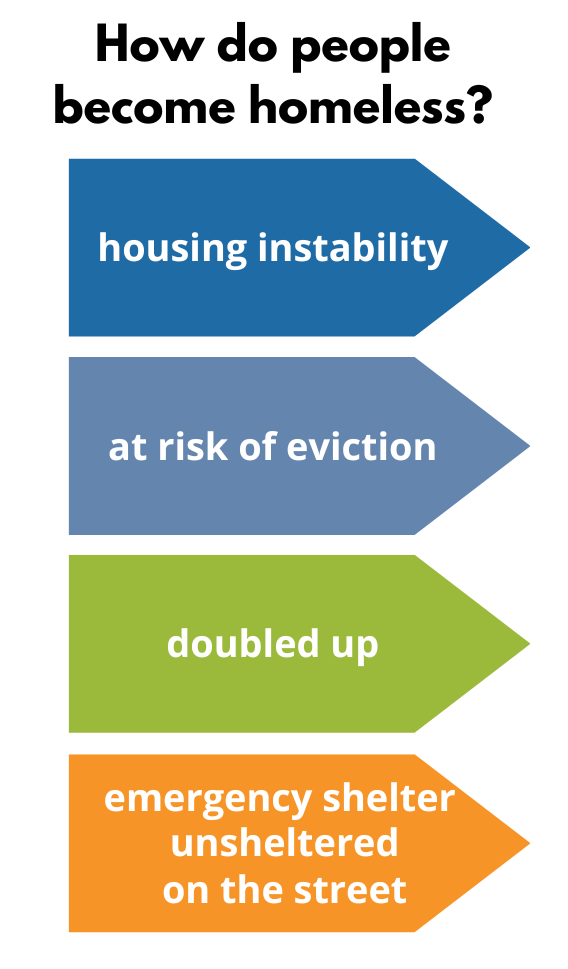 The descent into homelessness normally follows this progression. How do people become homeless? And much of it has to do with the lack of affordable housing.
The descent into homelessness normally follows this progression. How do people become homeless? And much of it has to do with the lack of affordable housing.
How people become homeless:
Families Experiencing Housing Instability
Individuals and families are in rental housing. But they’re what we call, severely cost-burdened. And paying 50%+ of their income for housing.
The Ohio Housing Finance Agency reports roughly 1/4 of households across the state are severely cost-burdened.
Unfortunately, in Cincinnati, those numbers are even higher. In fact, in 2022 we had one of the fastest rising rent rates in the country.
People at Risk of Eviction
Falling behind on rental payments due to inability to cover housing costs. Or, court-ordered removal from housing. Or, housing surrendered by tenant when facing eviction proceedings.
Unfortunately, people facing eviction are certainly in need. But they are not the population of people most imminently at risk of homelessness. Living unsheltered on the streets or living in an emergency shelter.
Most likely to become homeless:
Families and Individuals Doubled Up
That is, those who do not have their own housing and are relying on others. People sleeping on the couches and floors of family, friends and acquaintances. This a situation commonly referred to as, “doubled-up”.
So, they rely on others to provide a temporary place to stay. And can be asked to leave at any time.
Statistically, the next group of people who will find themselves on the streets and in emergency shelters.
This is when a family is a candidate for the Shelter Diversion Program. Only if, capacity is available.
In essence, Shelter Diversion means keeping individuals and families from entering emergency shelters or sleeping in places not meant for human habitation. Or, by definition, becoming literally homeless.
Shelter Diversion is targeted to those who have already lost their own housing, are doubled up, and are running out of places to stay. The program provides financial assistance, and robust case management.
Literally Homeless – On the Street or in Emergency Shelter
Now, having run out of temporary places to stay experiencing homelessness. Families and individuals residing in an emergency shelter or sleeping in a place not meant for human habitation.